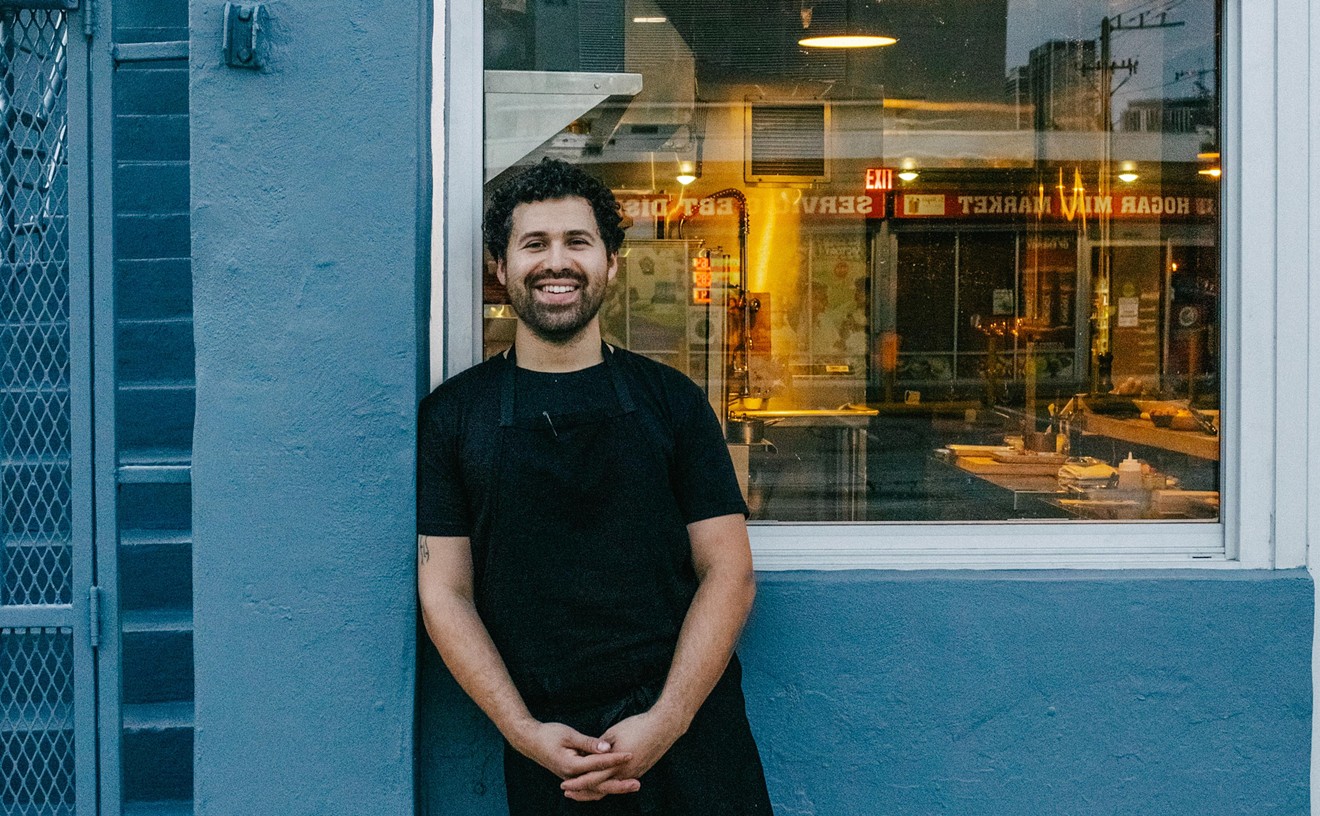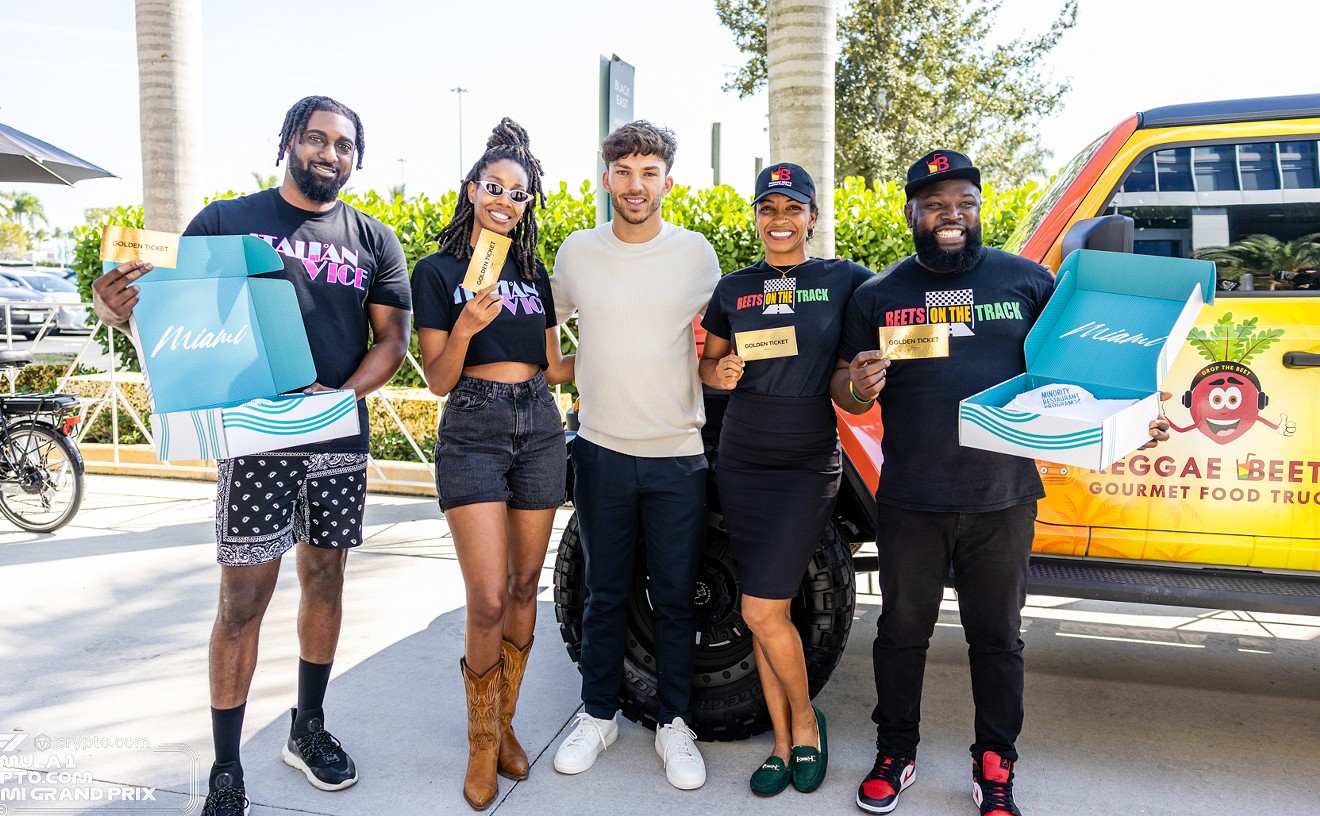Read also:
- Wynwood Kitchen & Bar Plays With Porton Pisco
- Johnny Schuler's Passionate About Pisco
Last week, the Taste of Peru Gastronomic Festival made its third appearance at the Miami Airport Convention Center, bringing hundreds of exhibitors, cultural activities and of course, copious amounts of food and drink. As part of the event, the Peruvian American Chef's Association (P.A.C.H.A.), in partnership with renowned spirit expert Johnny Schuler, hosted a panel on pisco, the colorless, grape-based liquor finding a foothold in the American spirits market.
A liquor unique to South America, pisco can best be described as a colorless brandy. It's often sipped neat or mixed into cocktails, from pisco punch to the pisco sour, and like any other liquor, comes in several qualities. One of the products of this influx is Porton Pisco, an ultra-premium brand made specifically for the U.S. market.
Pisco Portón's master distiller Johnny Schuler is one of the world's leading experts on the spirit. He's the former president of the National Taster's Guild in Peru, a member of the National Commission of Pisco (CONAPISCO), and a recipient of a Medal of Honor from the Peruvian Congress in recognition for his work promoting pisco and upholding Peruvian culture and tradition. Let's just say he knows his way around a bottle.
Short Order spoke to Schuler on pisco pride, spicy ceviche and where to get the good stuff.
Short Order: How did Portón originate?
Johnny Schuler: Portón is the product of a passion of an American entrepreneur who sold his ventures in Peru. He's an oilman who married a Peruvian lady, and lives in the states in Houston. So two or three years after selling his enterprises in Peru he decided to go into some sort of business where he could help Peru and he began to investigate the world of pisco. That's where he runs into me.
I come from the restaurant business. I owned restaurants in Lima, my father had restaurants. But about 25 years ago I discovered real pisco, that beautiful product. In my father's restaurants in those days we had that awful tradition of buying the cheapest product for the rack to make pisco sours. We thought, once you add the lemon juice, the egg whites, the sugar, nobody's going to notice. Big mistake.
So I'm invited one day to participate in this Peruvian Pisco championship. I tell the organizers, I'm a taster of wine, I already had a huge collection of wines, a huge cellar in my house, I had already thrown the first wine club in Peru. But they said come and organize it. So I said all right. These tasters were drinking the glasses bottoms up, so after the fourth or fifth sample they're all gone! I went and I said, this is not the way it's done. So we organized the tasting, and then they invited me to sit down. The fourth or fifth sample comes to my nose, the glass comes in and I go -- ohhhh my god what is this? Beautiful! The nose was flowers, perfumes. I had rose petals, I had orange blossoms, pineapples, ripe mangos.
I said, what is this? They said pisco, I said it can't be, This has to be something imported. It comes from somewhere else. So I discovered pisco and it was love at first sight. So to make the story short, I wrote books, began a love affair that hasn't ended and will never end.
This crazy gringo American came along and he said, let's make a business of this, it's your passion to bring pisco to the United States so let's do it.
Why do you think there's been such a growing interest in Peruvian culture and food in America?
Actually the Peruvian American Chef Association (PACHA)'s name has a beautiful symbolic meaning in Quechua (native language of the Incas). It means earth, mother earth. Pacha mama -- we worship mother earth, the bounty giver. And that is the miracle of Peru, the bounty. We have potatoes in 3,400 registered varieties, corns, sweet potatoes, fish, tomatoes, hot peppers -- you can't imagine what we have. That's the bounty of pacha mama, mother earth. So this miracle has happened because there was an interchange of cultures, of tastes.
What happened is, our chefs, cooks in Peru began to travel outside and study at the CIA and all these famous schools and come back and all of a sudden they were applying techniques of cuisine to our products. So that's the miracle, that's what happened. You have some dishes with the most amazing schematics, textures, colors, the most amazing tastes and it's because we have all the products. And that movement brings also pisco with it.
What makes Pisco Portón unique?
Porton is a realization of a lot of love, a lot of passion, of a lot of work and a lot of people. I had visited all the distilleries that existed in Peru over the years. In my first book written 15 years ago I had wanted to put as like a Playboy centerfold in the middle, a picture of distillery Hacienda La Caravedo, the most beautiful work of engineering. It was built in 1684 and it's still working distilling pisco.
So we bought it and that is our emblem, that is the blueprint for Porton. In 1684 there was no electricity. Now everything is stainless steel, state of the art, but we had to raise the equipment to create the difference in heights so everything could move by gravity. We incurred a lot more expenses than we had to.
Portón is one year of absolute dedication from the last day of harvest to the first day of harvest -- the whole cycle. It's really taking a lot of care of the plant -- how you nourish it, how you water it, how you fertilize it, how you protect it, how you prune it. It's the sun of the valleys of Ica, it's the sandy soils of those deserts, it's the trickling waters of the glaciers that melt in the Andes that bring the water down, it's the female hands of our pickers.
We call it techno-artisinal, using the best of technology. Portón is an ultra premium liquor made from three grapes that I chose because of the aromatic and flavor structure of each combined in a proportion that I'm sure will satisfy the most demanding. It's a work of art, something that was made in heaven. That's what Portón is.
How would you describe pisco, and Portón in particular, for newbies?
It's an un-aged un-wooded brandy. It's a cognac that hasn't gone through oak and hasn't aged. Why? Because cognac needs wood to be cognac. The grape is a grape that's insipid. It doesn't have any flavor structure, it's neutral and it makes alcohol. Cognac becomes cognac after 15, 20 years in oak. We don't. Our structure is the earth, the sun, the warmth of the day, the cold of the night, the hand of the man, the tradition of 400 years.
Pisco is colorless, it's made from grapes in a very special way that gives you in the end the original flavor structure of each of the grape varietals. We are the essence of the grape, we are distilled to proof. We cannot add water which makes us singular in the world of spirits. Walk into a bar in Miami and none of the bottles are distilled to proof. But in Peru its against the law to add water, so it's pure nectar
This is something we haven't been able to transmit to the rest of the world. We've kept it to ourselves and now we want to share it with the rest of the world.
What are the newest trends in Peruvian cuisine?
Peru is bursting onto American haute cuisine scene with the rise in popularity of ceviche - the national dish of Peru. Chefs are embracing this ancient South American cuisine with influences in our cuisine from the Arabs, Spanish, Chinese, Japanese, Afro-Peruvians and more--our cuisine is a blend of about ten different food cultures.
Peruvian cuisine is being updated all over the country in hip venues like Ricardo Zarate's restaurant Picca in Los Angeles has helped popularize Peruvian standards beyond ceviche - like tiradito (another marinated sliced raw fish) and La Mar Cebichería Peruana in San Francisco, where diners enjoy the traditional Peruvian stir-fry lomo saltado and causas.
What do recommend as far as pisco and food pairings?
My favorite pairing with pisco neat is ceviche. The strength of a beautiful pisco stands up to the acidity of the lemons and heat of the peppers in ceviche. It is a pairing made in heaven. For me the sipping, not shooting pisco, is a wonderful combination.
Many are now putting a little splash of pisco into ceviche. They also take the "leche de tigre" or ceviche juice and use it as a mixer, a substitute for Bloody Mary cocktail at brunch.
With pisco you can macerate, marinate and flambé. I use it to cook fish, meat, seafood, and poultry. I flambé my Crepe Suzette with Portón at one of my restaurants and it is delicious! Or with dessert, you should try Portón with a bar of chocolate. Take a bite of chocolate and then a sip of Portón. You can't understand how it is possible as it is so beautiful how the tastes come together.
If you want to get a taste of the good stuff, Pisco Portón can be found at the following Miami locales:
Follow Hannah on Twitter @hannahalexs.
Follow Short Order on Facebook , on Twitter @Short_Order, and Instagram @ShortOrder.









